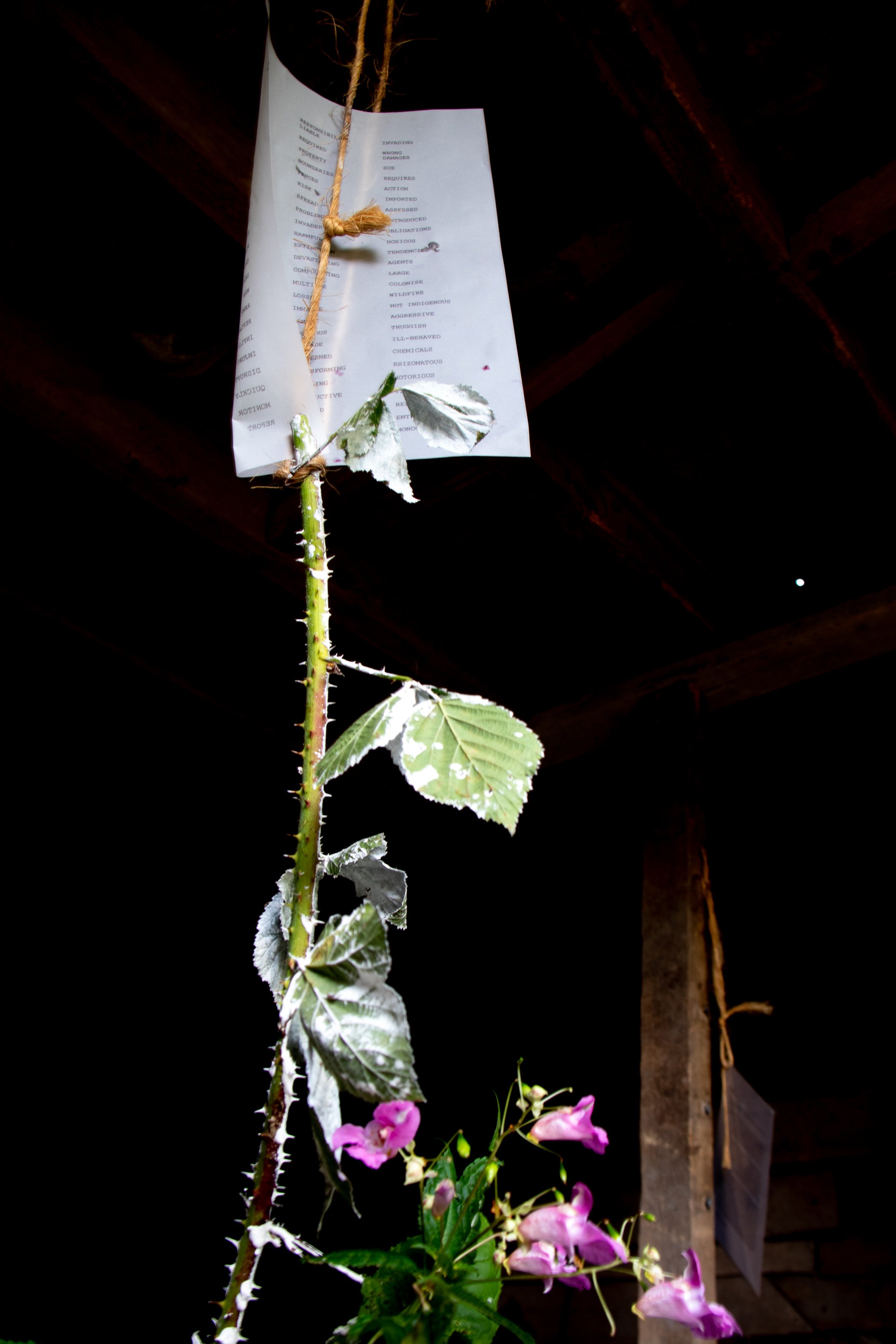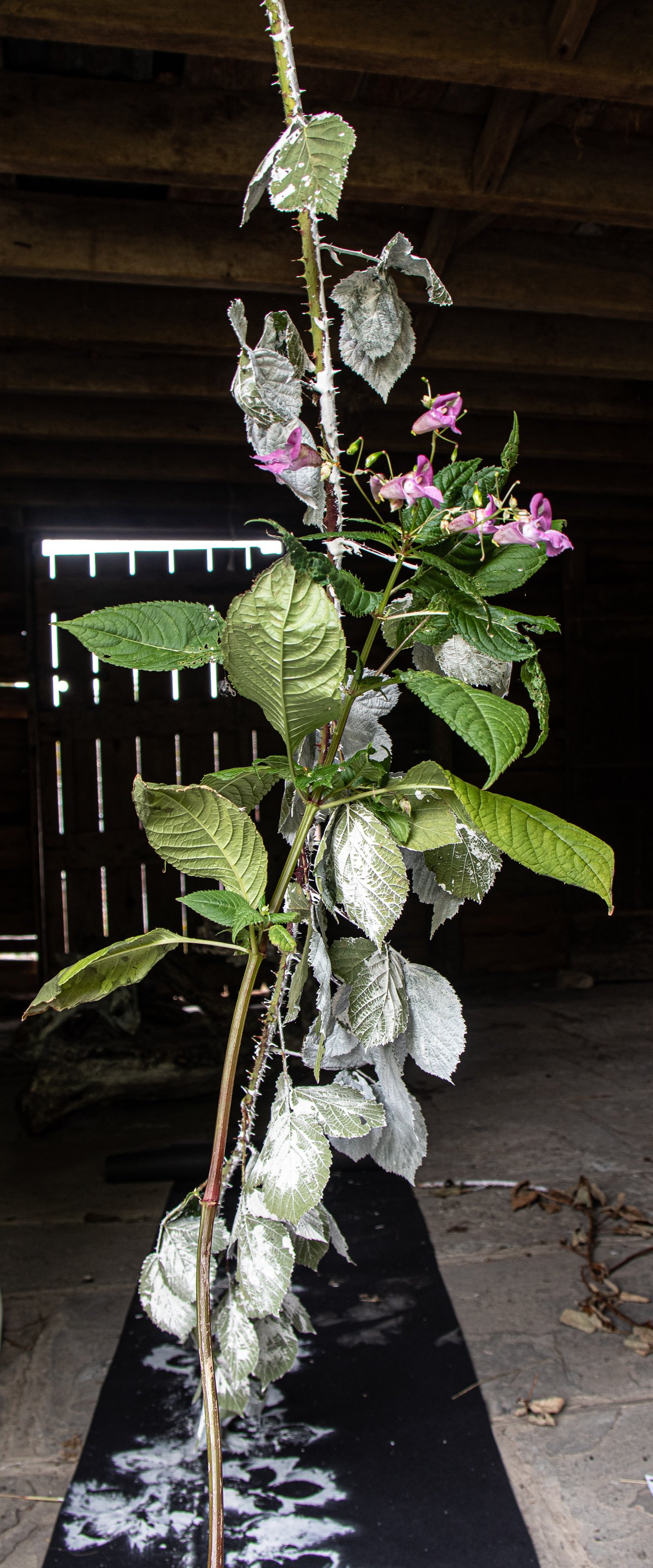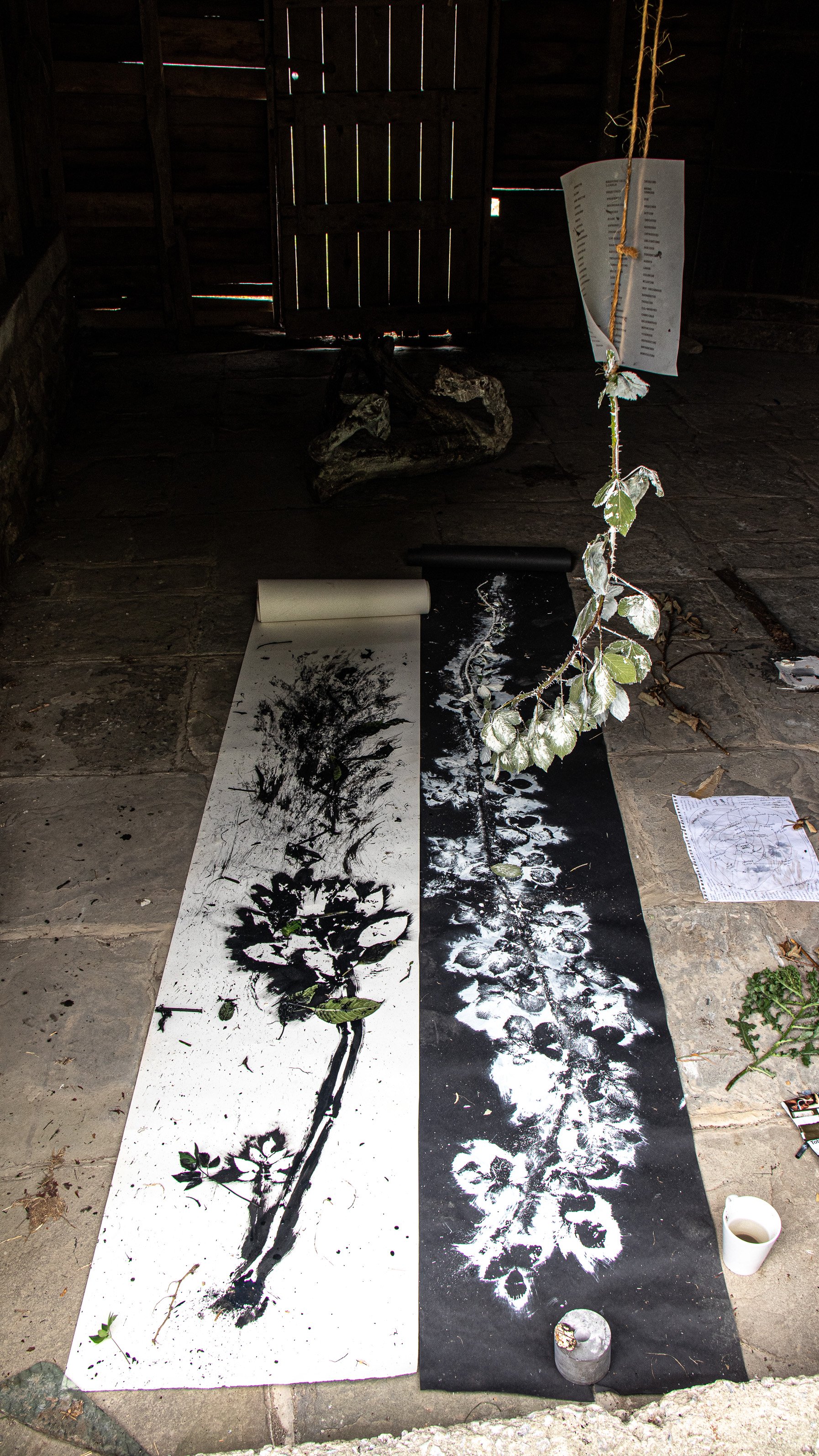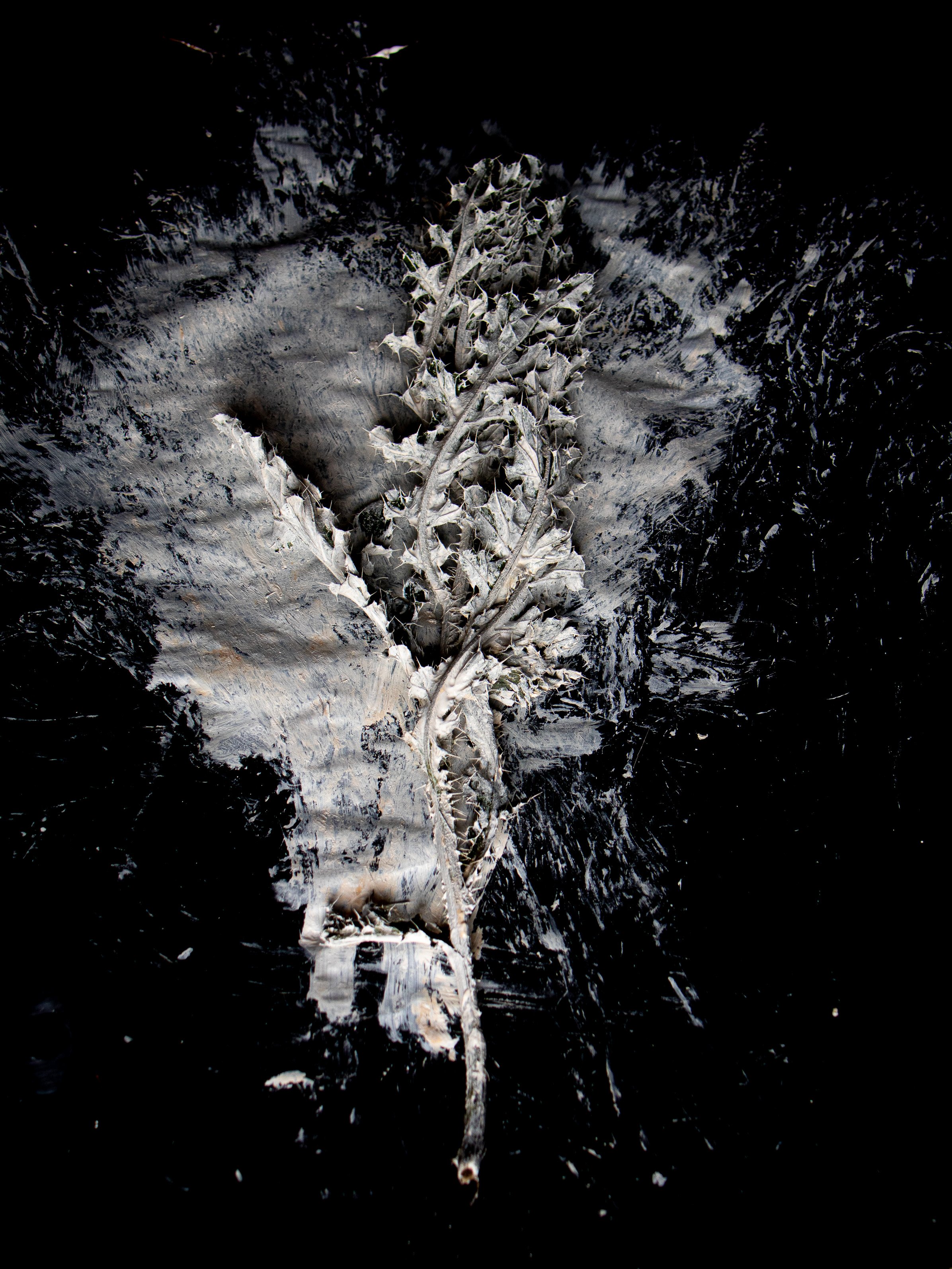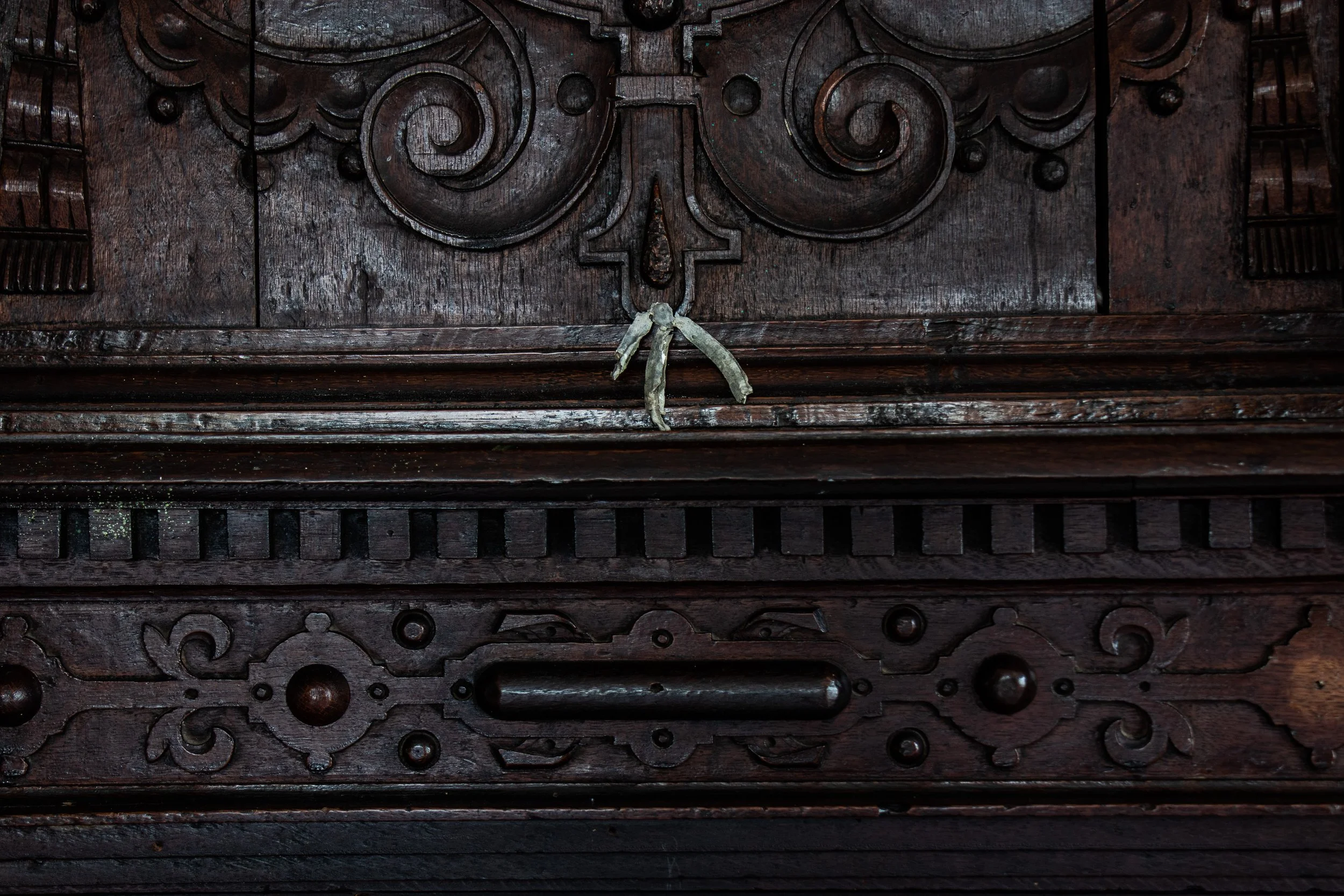Hail the holon, the ghost in the machine of that intractable, intermingled complexity, revealing that we are - everything is - in itself complete and part of the whole.
or
Ghosts and weeds - an affront to order?
This is a story woven at the Sidney Nolan Trust, at The Rodd (‘the clearing’), during a week’s residency with 8 other artists at the invitation of Jony Easterby in August. Jony had suggested we might focus on two themes from his residency: ‘in praise of shadows’ and 'something to do with plants’. I threw in a weed, and the gardener threw in a ghost. What, I wondered, is the connection?
First, the ghost
The ghost lived in the 16th century manor house. This is for sure, because the Gardener had seen it and I had smelt it in the same places as he’d seen it. And a woman visiting the Trust one day (who by coincidence ‘clears’ houses of spirits) said it was so strong it made her feel sick. She found it so strong she couldn’t even begin to clear it. The Gardener wasn’t afraid. He felt some connection with it, and thought it might also visit his house. One of our artists’ group said he saw it walking on the lane at a place where i’d felt a strong chill in the middle of the 36 degree heat wave. This lane led to the Gardener’s house. And also to where Sidney Nolan used to like to paint, overlooking the fields, and so he spent his week there, painting. We thought all this was Interesting. And I was Intrigued.
I asked the ghost to show me around. It took me to barns of farm machinery surrounded by weeds, stubble fields, himalayan balsam by the river. There were shadows here. The past in the present, layered attempts at exploitation, control, ownership and extraction through the ages. The story of ‘progress’ and who or what ‘wins’, begins to look shakey on the baked soil.
Early next morning, I started making ‘precarious offerings’ to the ghost. Perhaps it needed some attention? Perhaps it needed to be drawn out - freed? - of the house. I set myself up in a barn to shelter from the baking heat. It turned out to be a good shelter from the deluge that was soon to come. I gathered found objects around the house and barns, and slate i found dumped by the road on my way to the the Rodd ( a reminder of our ‘roofing the world’ of the industrial revolution).
And these ‘offerings’ seemed to work, in a way. I could no longer smell the ghost in the house. But that night, several people, on their way past the barn-with-the-offerings had Experiences. There was A Presence. Several slipped on the steps. One had music suddenly start playing on her phone. The Presence seemed to have shifted from the house to the barn. We started only going past there at night in pairs from then on.
The next day, via zoom, I asked a friend who can tune into buildings and energy, if she could offer any insights. I didn’t provide any context - in fact she didn’t even know where I was. She paused. Yes, she said. The ghost was tall and slim with lots of busy energy, with part of a tree in his left hand - perhaps a staff or walking stick. He had tweed jacket and trousers. He’s interested in lots of things and was frustrated and concerned about the state of the land. It might be good to ask him how he wants the land cared for.
At just that moment, a white cloud floated in through the door, hovered and dispersed, hundreds of seeds landing in my lap.
Next, the weeds
Sidney Nolan was an Australian artist. But he’d migrated to Britain (‘the homeland’), ultimately to Y Rodd. This made me think of Tasmanian Trawlwoolway artist Dave Mangenner Gough who i’d met at the EGIN residency in Capel Curig in 2019. We had been walking through a beautiful woodland when suddenly Dave looked down in horror at a bramble plant. Introduced by British colonisers as a garden food plant, these ‘escaped’ brambles are destroying delicate eco-systems and indigenous healing and foodways in Tasmania.
Back in the barn, covered in seeds, I looked up invasive species of plant in Tasmania. There are 119 official ‘invasive species’ of plant (including thistles - were these the source of the seed cloud?) on the official list for Tasmania. I wrote them out with a quill. The names bear witness. Apple of Sodom. Darwin’s Burberry. African Love Grass. Witch Weed. White Weed. [Here i recommend this brilliant podcast on ‘Stewarding Homeland’ with Clint Carroll describes Cherokee access to wild plants in northeastern Oklahoma amid shifting climate conditions and fractionated tribal lands, together with methods and strategies for Indigenous land education and community-based conservation]
To put this in perspective, I also found out that in the whole of Europe, there are just 36 ‘invasive species’ of plant. The ripples of colonisation. Ripples spread from the source, hit the bank, and come back again. But the effect of returning ripples on the colonisers ‘homelands’ are not equal to those we caused in the lands we have colonised: Running parallel with monoculture agriculture and the forced removal and labour of people and plants in plantations, setting up the shit storm of global devastation of people, land, biodiversity, culture and spirit. Ghosts abound and more to come.
All this made me wonder, is our attitude to weeds (words below extracted from government websites) reflective of our attitude to people?
Meanwhile (and in contrast), the Gardener at the Rodd had a relaxed attitude to most things, including weeds, and the wild appearance of a great deal of the garden. Let them do their own thing. He had had limited success trying to control the voracity of Ground Elder (imported by the Romans for salad). And noted some Himalayan Balsam down by the river. This is on land that is nolonger farmed by The Rodd, having been sold off a few years before. Himalayan Balsam is one of Europe’s officially invasive plant species. [By the by, in parallel with this sub-residency at The Sidney Nolan Trust, I was also working with Utopias Bach on a collaborative Residency at Mostyn Gallery in Llandudno, exploring ‘how can we create radical alliances with plants?’. Himalayan Balsam had featured in our first session, where we explored our relationship to weeds]
Ghosting our ancestral interference, the ghost and I set about working with potentially redemptive/sacrificial offerings and rituals to brambles and Himalayan Balsam and thistles. (There’s a film to come)
In Conclusion - OFFERINGS VS an ‘affront to order’
Just as I was struggling to write the ending to this blog, I received an email from a friend, Siân Shakespear. She had just returned from a visit to The Rodd.
“Dyma egluro ddaru ein sgwrs f’ysbrydoli i ymweld â The Rodd ger Llanandras! I was intrigued about our need to make offerings. There was the hint of offerings in some of the other work at the Rodd too [see here]! I wrote this poem in response”:
Poem in response to The Rodd, by Sian Shakespear
Before leaving I installed my offerings in the fireplace in the manor house. On the lintels of many of the other fireplaces in the house were symbols to ward off ‘evil spirits’. How can we come to terms with and make reparations for the hauntings of our actions and ancestors? Can we rethink the way we are in the world through radical alliances with ghosts and weeds, these radical disruptors of the so called ‘order’ of a way of being that has brought the world to the brink of collapse?
Maps of the ghost movements over 4 days.




























